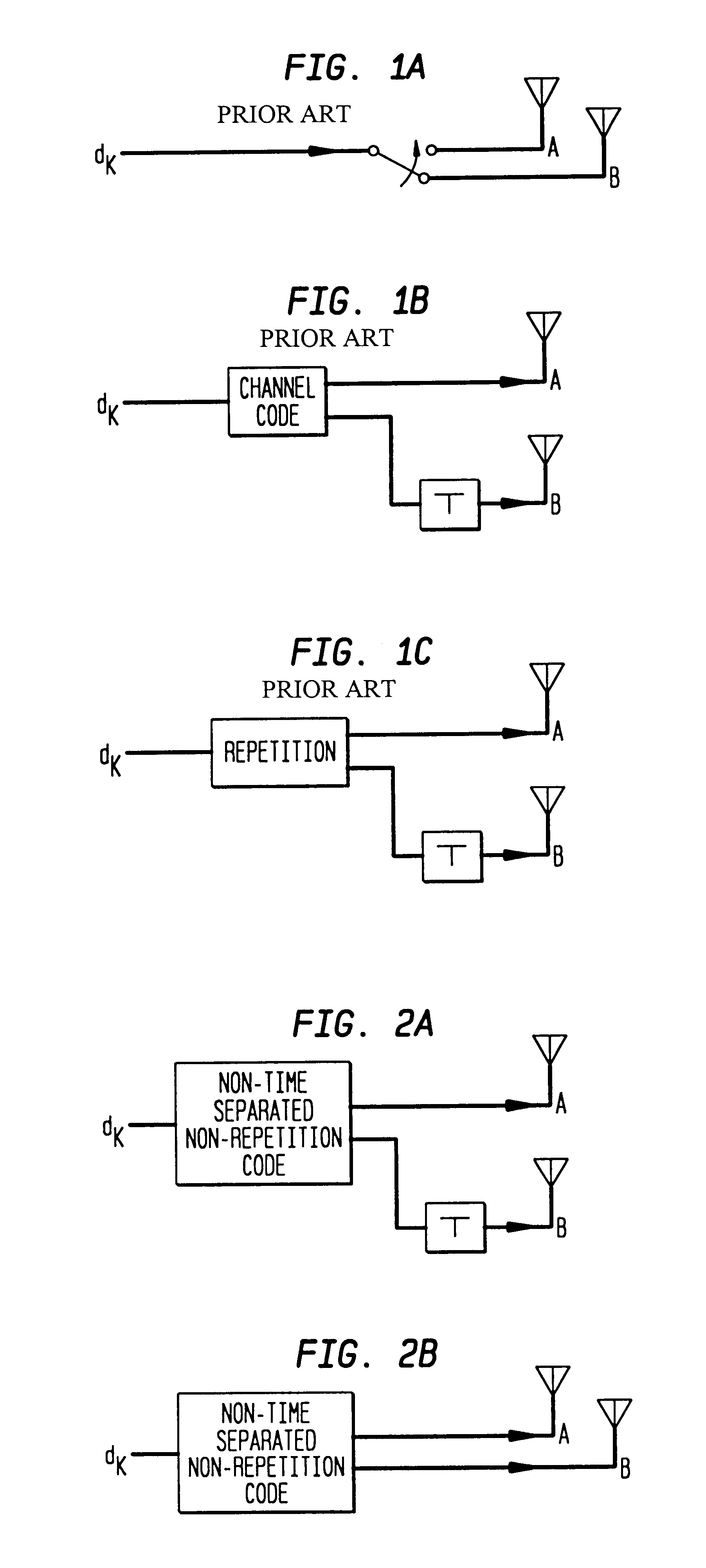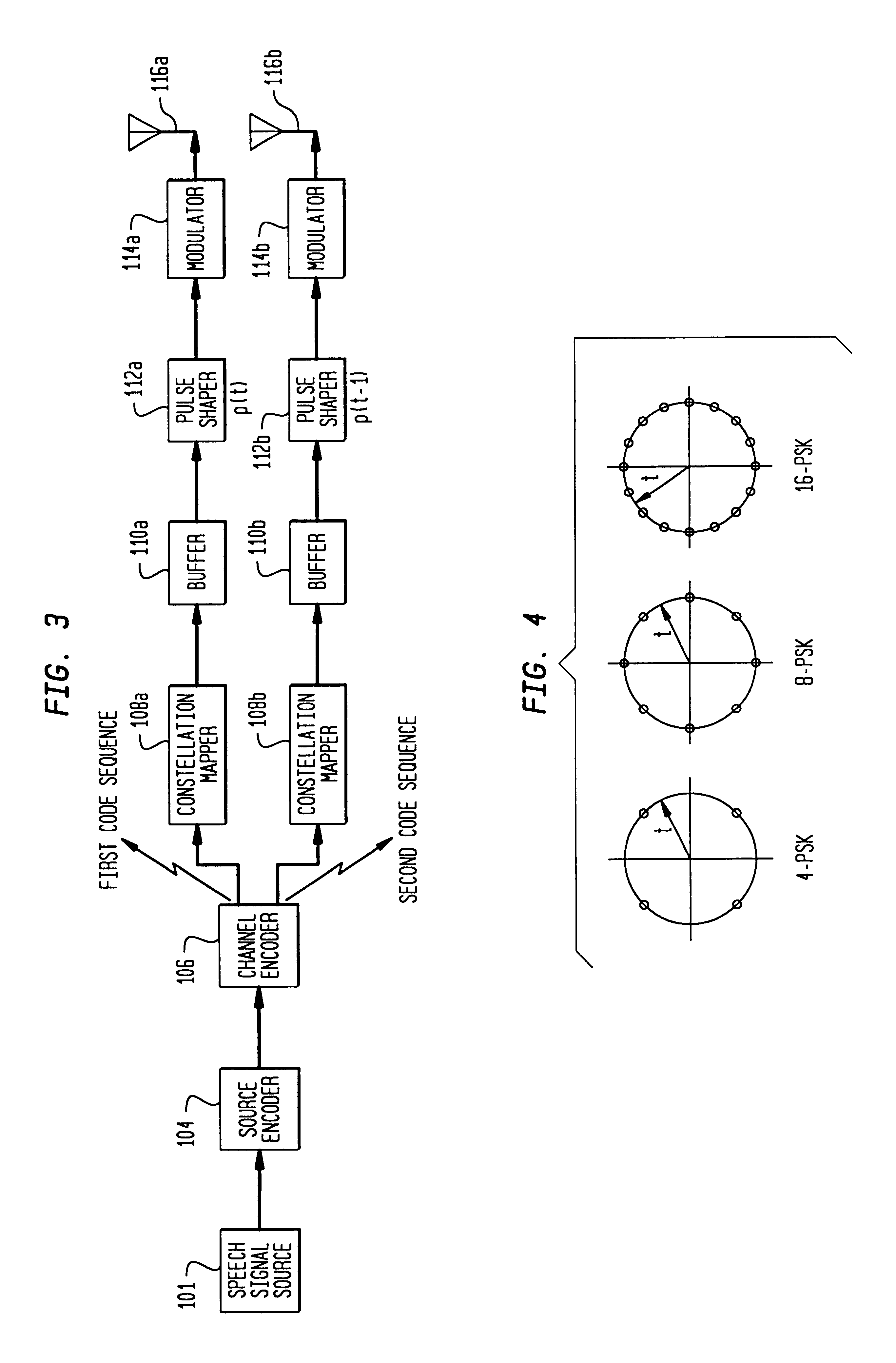Method and apparatus for data transmission using multiple transmit antennas
- Summary
- Abstract
- Description
- Claims
- Application Information
AI Technical Summary
Benefits of technology
Problems solved by technology
Method used
Image
Examples
example a
[0175]Suppose that a transmission rate of 0.5 bits / sec / Hz is required. In this example and as illustrated in FIG. 27(a), the BPSK constellation is used, with 0 denoting √{square root over (ES)} and 1 denoting −√{square root over (ES)}. The objective is to guarantee diversity gains 2 and 4 respectively in slow and rapid flat fading environments. The following code using M-TCM construction guarantees these diversity gains. At any time 2k+1, k=0, 1, 2, . . . depending on the state of the encoder and the input bit a branch is chosen by the encoder and the first coordinate and second coordinates of the labels are sent simultaneously from Tx antennas at times 2k+1 and 2k+2. For instance at time 1, if the branch label 1011 is chosen, symbols 1,0 and 1,1 are sent respectively from transmit antennas one and two at times one and two.
example b
[0176]Here a transmission rate of 1 bits / sec / Hz and diversity gains of 2 and 3 respectively in static and rapid flat fading environments are desired. In this example, illustrated in FIG. 27(b), the 4-PSK constellation is used instead. The objective is to guarantee diversity gains 2 and 3 respectively in slow and rapid flat fading environments. The following code using M-TCM construction guarantees these diversity gains. At times t=3k, k=0, 1, 2, . . . , three bits of data arrive at the encoder. The first bit choose a branch depending on the state of the encoder and the rest of two bits choose one of the 4 labels of the branch such as bt1bt2bt+11bt+12bt+21bt+22. Then bt1,bt+11 and bt+21 are sent via antenna 1 respectively at times t, t+1 and t+2. Similarly, bt2,bt+12 and bt+22 are sent via antenna 2 respectively at time t, t+1 and t+2.
[0177]As before, the inventors have simulated the performance of communication systems designed based on the above code. Excellent results have been co...
PUM
| Property | Measurement | Unit |
|---|---|---|
| Structure | aaaaa | aaaaa |
| Transmission | aaaaa | aaaaa |
| Time | aaaaa | aaaaa |
Abstract
Description
Claims
Application Information
 Login to View More
Login to View More - R&D
- Intellectual Property
- Life Sciences
- Materials
- Tech Scout
- Unparalleled Data Quality
- Higher Quality Content
- 60% Fewer Hallucinations
Browse by: Latest US Patents, China's latest patents, Technical Efficacy Thesaurus, Application Domain, Technology Topic, Popular Technical Reports.
© 2025 PatSnap. All rights reserved.Legal|Privacy policy|Modern Slavery Act Transparency Statement|Sitemap|About US| Contact US: help@patsnap.com



